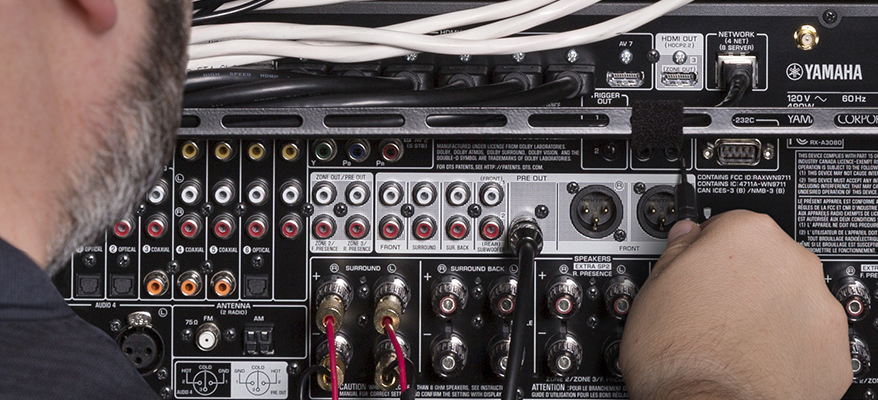March Is Multi-Screen Madness
Don’t miss a single game.
Enjoying major sporting events at home is the reason you have a 70″ 4K TV and a legit sound system. The Super Bowl™, Kentucky Derby, Daytona 500, the Masters — all are must-see for sports fans.
For these events, all you need to know to watch the action from beginning to end is: what time does it start and what channel is it on? It’s that simple because they happen just once a year, at one specific time, and the broadcasting networks do their best to make sure they don’t conflict with one another. Even NFL, NBA and MLB playoffs and championships (including the World Series) are coordinated so the start times don’t overlap. That way, dedicated fans can see all the action … and the networks can maximize their ratings.
There is, however, one huge exception to this meticulous planning. Around the middle of March, the NCAA® Tournament begins. This culmination of the college basketball season presents a challenge for the fan who wants to enjoy a real home court viewing advantage.
Once the final 64 teams are seeded into four single-elimination brackets, the fun begins. A full schedule of 48 games are played in the first four days, making it impossible for a network to broadcast them all on one channel. With so many games being played at the same time, game conflicts simply can’t be avoided.
The networks have, however, come up with a solution: Spread all the games across four different channels: CBS, TBS, TNT and truTV. Sound good? Not really. Surfing between the four channels with your remote only guarantees you’ll miss a lot of great plays. The best way to watch is to pick up all four broadcasts on four separate TVs.
Sound complicated? Not really. Not if you’re a serious sports fan. In this article, we’ll show you how easy it is to convert your living room into a multi-screen, tournament-ready sports lounge. With a creative combination of cable, satellite, terrestrial broadcast and internet streaming devices, you’ll be able to watch four games simultaneously without interruption. But be sure to start planning early, so you’re not running to the store on game day.
What You Need
1. Four TVs in one room.
You’ll need one for each broadcast channel, so gather the television sets from around the house (bedroom, kitchen, borrow from a friend, etc.) and set them up in your living room alongside your main monitor.
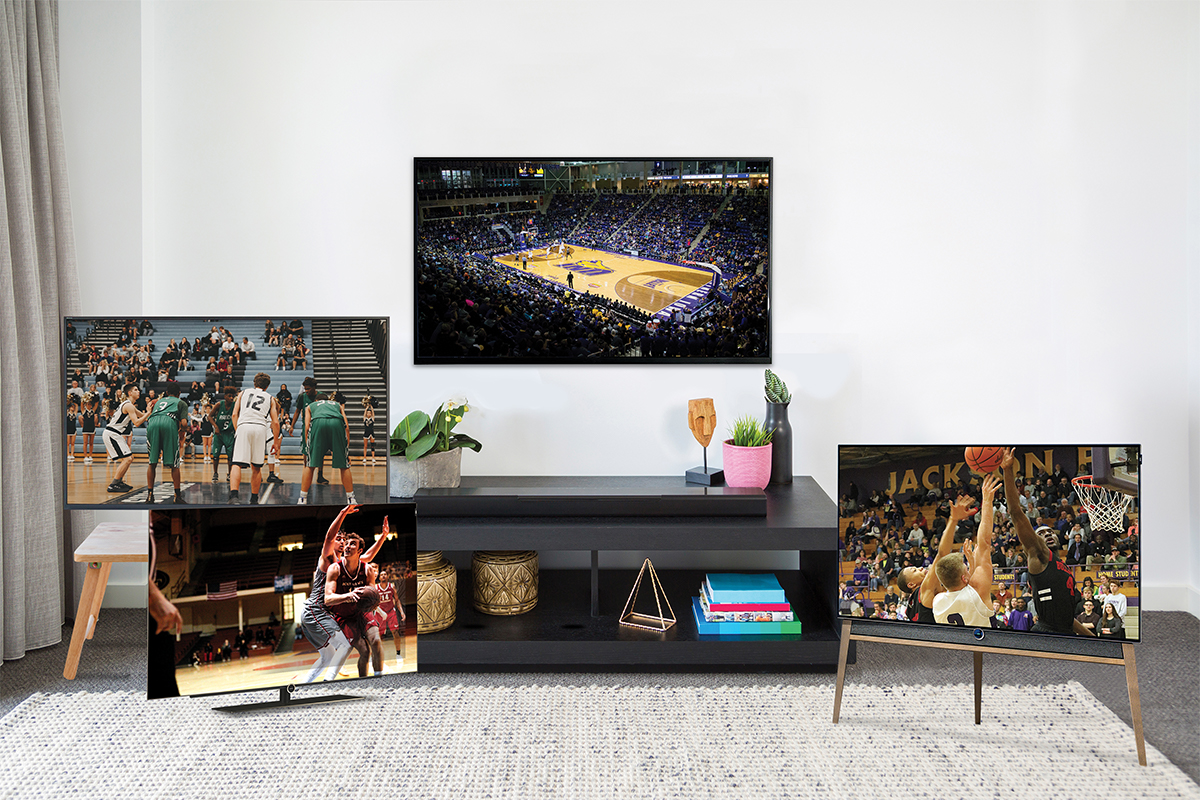
2. Access to streaming apps for each TV.
If all the sets are smart TVs, they should be able to access the most popular streaming apps: YouTube™ TV, Hulu™, Sling™ and others. If they’re a little older and don’t support the latest versions of these apps, don’t worry — there are hardware add-ons available to get the job done, such as Apple® TV, Fire® TV, Roku®, Chromecast® or Xbox™ One. Any of these can upgrade any monitor to a state-of-the-art smart TV.
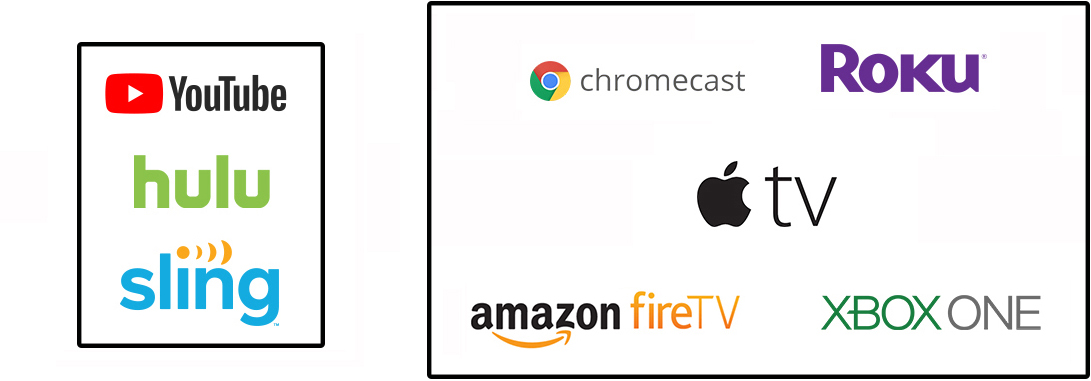
3. Indoor HD antenna for terrestrial broadcast.
You’ll need an antenna to pick up your local CBS channel. HD antennas are available online or from any big-box store. Models vary, but to ensure clear picture quality, get the one that can pick up the farthest digital station.
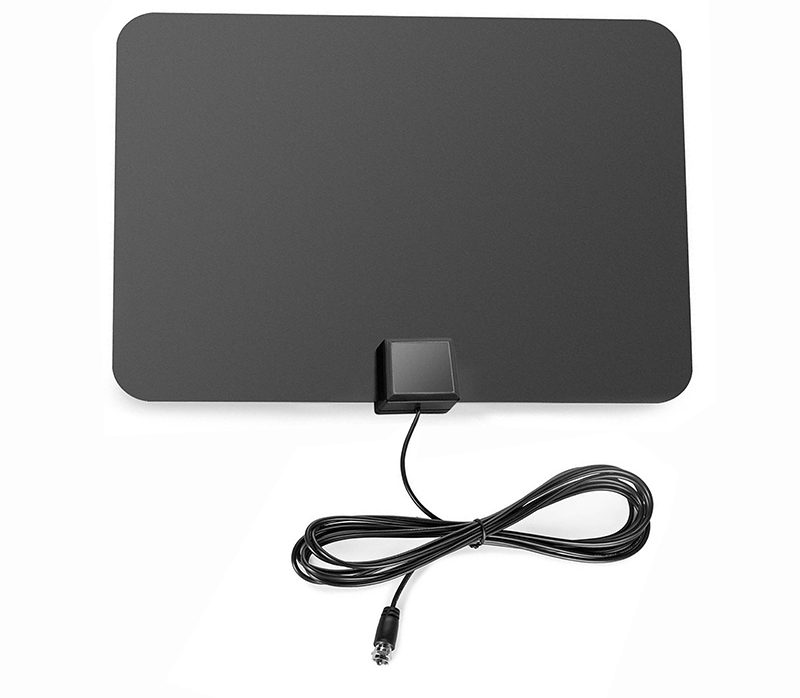
You’ll also need to subscribe and register your smart TVs and/or streaming devices to a streaming services app like YouTube TV, Hulu, Sling or any other that carry the four channels you’ll need to watch the tournament (i.e., CBS, TBS, TNT and truTV).
Note: If you don’t already subscribe to one of these services, do a little research. The services vary in terms of broadcast content and the hardware they support. The number of simultaneous streams each subscription supports is important. Some services limit the number of channels that can be simultaneously streamed into the home. You’re going to need two to three streams to see all the games. The good news is that these are normally month to month services with no penalty for subscribing for a single month.
Set Up Your TVs
There are many ways to make this happen, but the good news is that all are equally effective. Here’s an example that uses a combination of connections from cable TV, terrestrial broadcast and two internet streaming devices. (If you’re tech savvy, get creative with the hardware and streaming services you already have available.)
1. Monitor One (TBS broadcast):
This is the main TV that normally sits in your living room. Use the cable or satellite service already connected to this TV to receive the TBS broadcast.
2. Monitor Two (CBS broadcast):
This monitor will get its signal from local terrestrial broadcast using an indoor HD antenna.
3. Monitors 3 and 4 (TNT and TruTV signals via internet streaming):
These last two monitors are going to get their signals from the internet using the built-in apps or external streaming devices mentioned above.
Switch the Sound
Now that you have different games on all four monitors, it’s just a matter of switching the sound to the one you want to watch. This is simple if you’re using a Yamaha AV receiver that has a SCENE function. (All models made in the past 15 years have it.)
Here’s how:
1. Connect each TV’s audio output to an analog or digital input on the receiver:
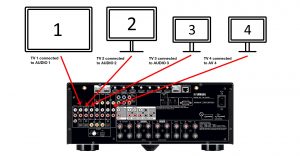
2. Set the receiver’s input to the monitor you want, then press and hold a SCENE button for five seconds to set the scene. For example, connect Monitor 1 to the Audio 1 input and set SCENE 1, then connect Monitor 2 to the receiver’s Audio 2 input and set that to SCENE 2, and so on.
3. During the games, simply press one of the four programmed SCENE buttons on your remote to select the sound from the desired monitor. See the action, hear the action!

Now you’re all set to watch the drama of the tournament unfold in the comfort of your home theater. Grab your bracket, your favorite snacks, and enjoy! Will it be March Madness™ or March Sadness for your team?














